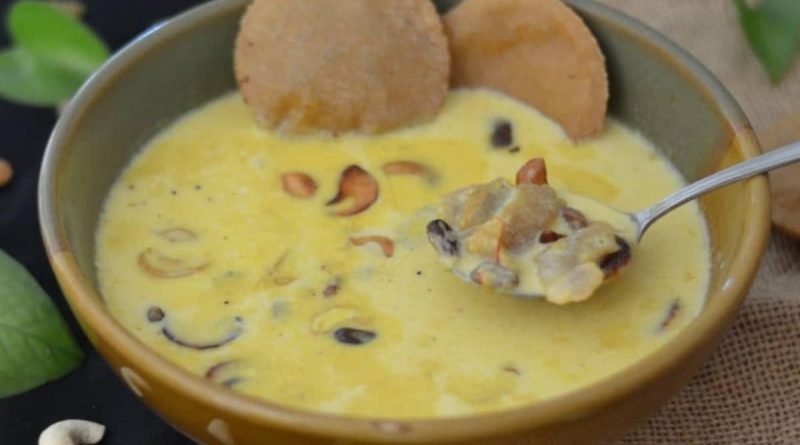Crispy Poori Payasam Recipe: A Delectable South Indian Dessert Featuring the Crunchy Texture of Fried Poori
The Delightful Dessert: Poori Payasam
Origins of Poori and Its Popularity in South India
The origin of the poori is a subject of debate among food enthusiasts, with some claiming it originated in Northern India while others argue it originated in Southern India. Despite the controversy, there is no denying that poori is a beloved breakfast option in many parts of South India. Quick-serve South Indian restaurants in Chennai and Bengaluru often feature poori and potato (known as palya in Bengaluru) as a popular choice. For those with connections to Bengaluru, pairing poori with potato and coconut chutney is a common practice. While opinions may vary on the origins of poori, there is widespread agreement on the deliciousness of poori payasam or appe payasa.
A Time-Tested Delicacy: Poori Payasam
From Thanjavur in Tamil Nadu to Udupi in Karnataka, poori payasam has stood the test of time as a cherished dessert. This creamy kheer holds a special place in the childhood memories of many who grew up in Chennai and Bengaluru. Traditionally prepared during festivals like Deepavali and Janmashtami, poori payasam is a staple in many South Indian households. Wedding feasts in Bengaluru often feature this delectable dessert, where the crispy texture of the poori complements the rich milk kheer perfectly. The combination of crunchy poori bits and sweet, velvety kheer creates a fail-proof recipe that delights the taste buds.
Variations and Garnishes
The key ingredient in poori payasam is, of course, the poori itself. Chefs and home cooks often put their own spin on the recipe, with variations ranging from using maida instead of rava to achieving a biscuity texture in the poori. Many swear by the crispy, biscuit-like texture as the perfect base for this indulgent dessert. When it comes to garnishes, while nuts are a common addition, some households prefer to include cashews and raisins for added flavor and texture. For a unique twist, some recipes substitute badam kheer for reduced milk, adding an intriguing element to the traditional dish.
Perfecting the Recipe
To truly savor the flavors of poori payasam, it’s essential to get the textures just right. The crunchiness of the poori, combined with the aromatic saffron and cardamom powder, creates a harmonious balance with the sweet, reduced milk. While there are no shortcuts to preparing this dessert, the effort is well worth it. Reserve this treat for special occasions like cheat days or festive menus.
Recipe for Poori Payasam
Ingredients:
For Poori:
– 1/2 cup Chiroti rava
– A pinch of salt
– Water (for kneading the dough)
– 1 tbsp oil
– Ghee or oil (for deep frying)
For Payasam:
– 1 liter full-fat milk
– 1/2 cup sugar
– 8-10 strands of saffron (soaked in warm milk)
– 1/2 tbsp cardamom powder
– 2 tbsp pistachios and almonds (finely chopped or slivered)
Method:
1. Mix rava, salt, and oil in a bowl. Gradually add water to knead the dough and let it rest for 15 minutes.
2. Shape the dough into small balls and roll them into thin pooris.
3. Fry the pooris in ghee or oil until crispy and golden. Ensure they are fried to a crispy consistency.
4. Crush the cooled pooris and set aside.
5. Boil the milk in a pan until reduced to three-fourths of the original quantity.
6. Add sugar and simmer for a few minutes.
7. Stir in saffron, cardamom powder, and crushed pooris, and cook for two minutes.
8. Turn off the heat and add chopped nuts.
9. Serve the poori payasam hot or cold for a delightful dessert experience.
Whether enjoyed hot or cold, poori payasam is sure to satisfy your sweet cravings with its unique blend of flavors and textures. Try this recipe for a taste of South Indian tradition in every bite.

